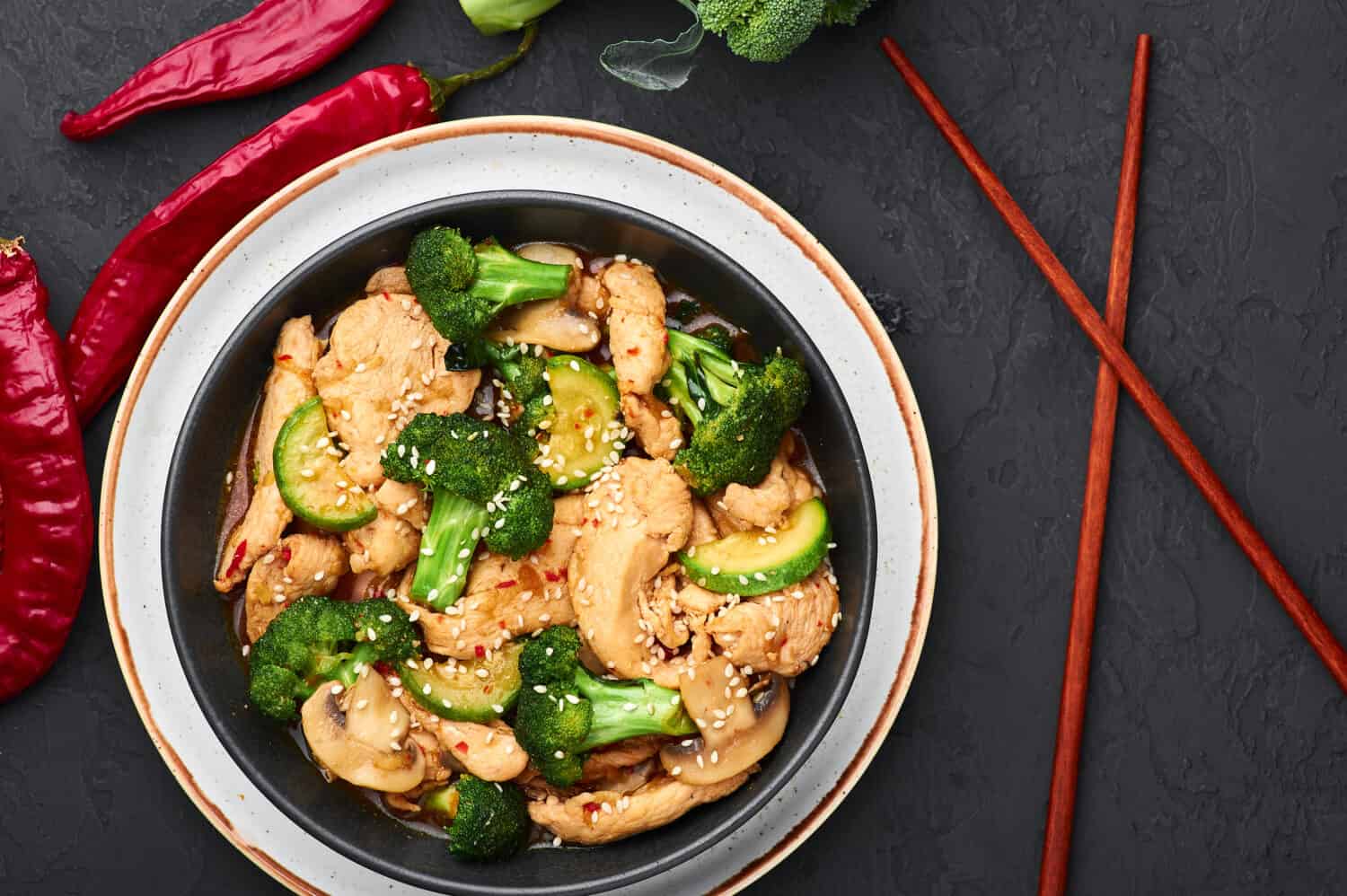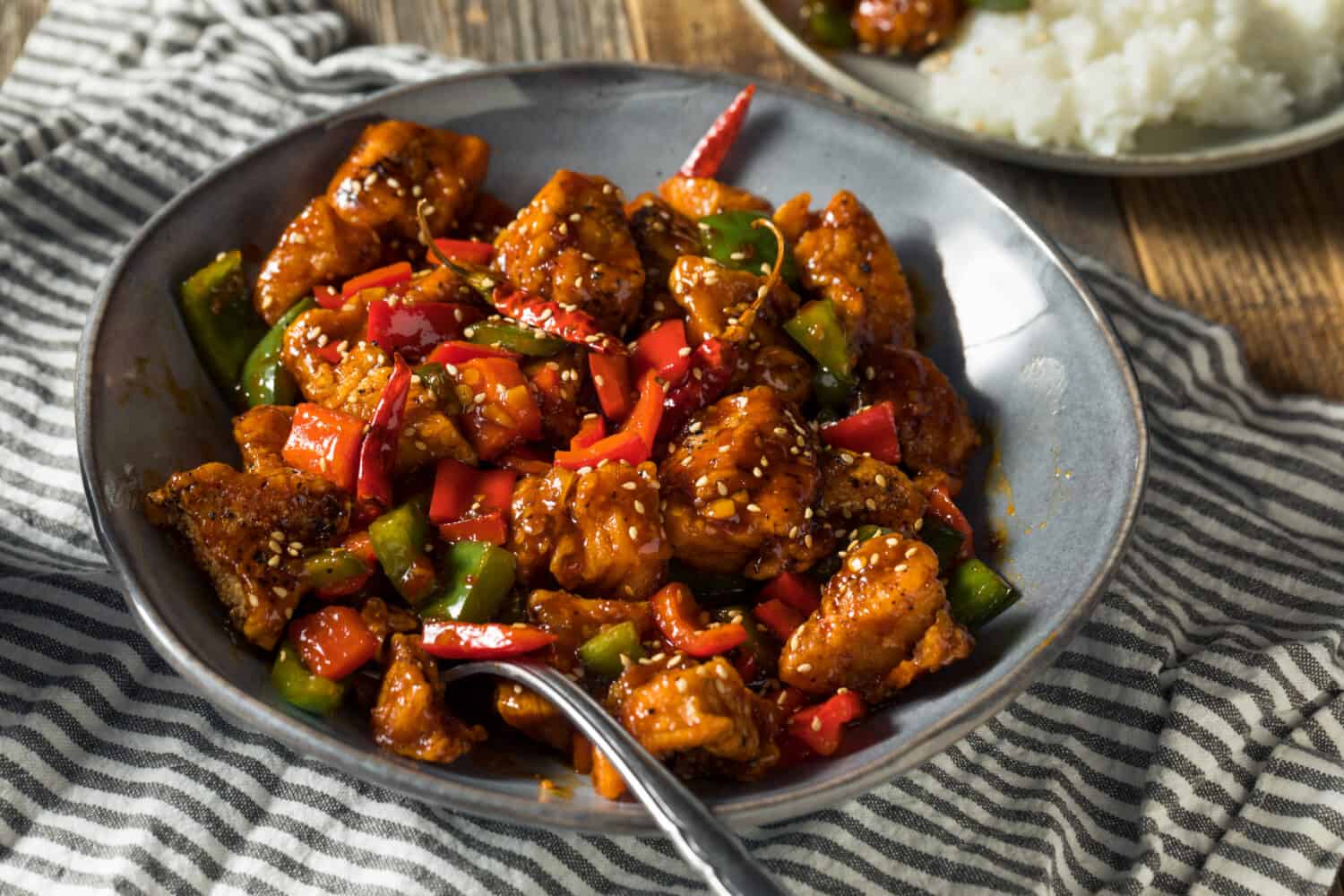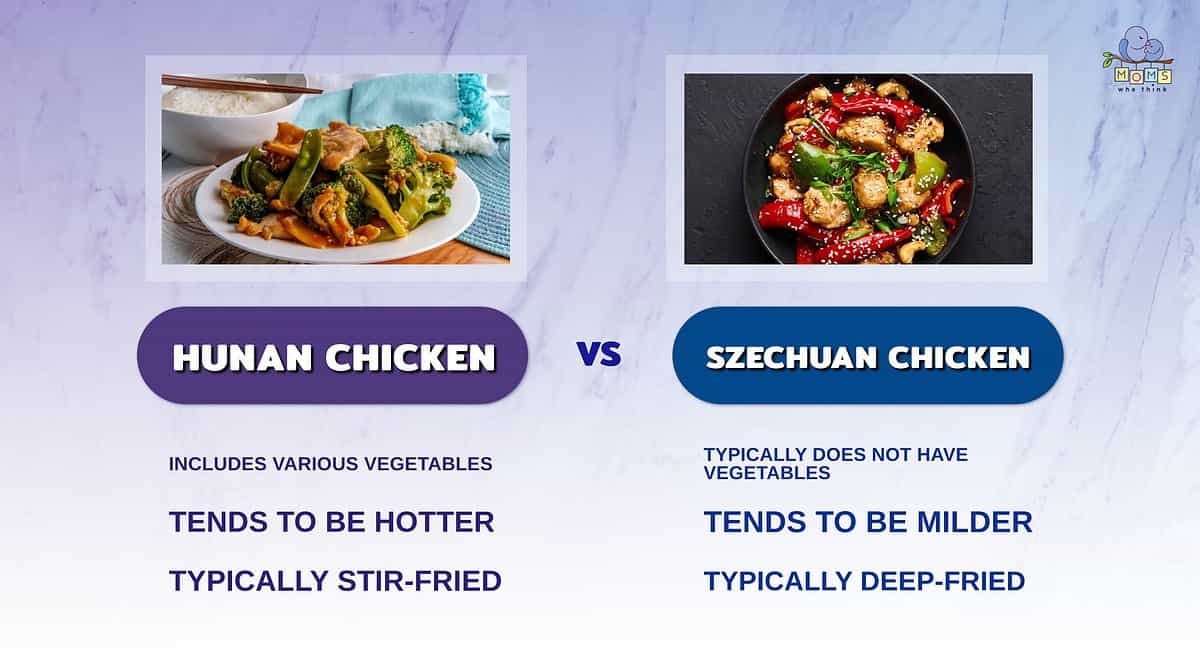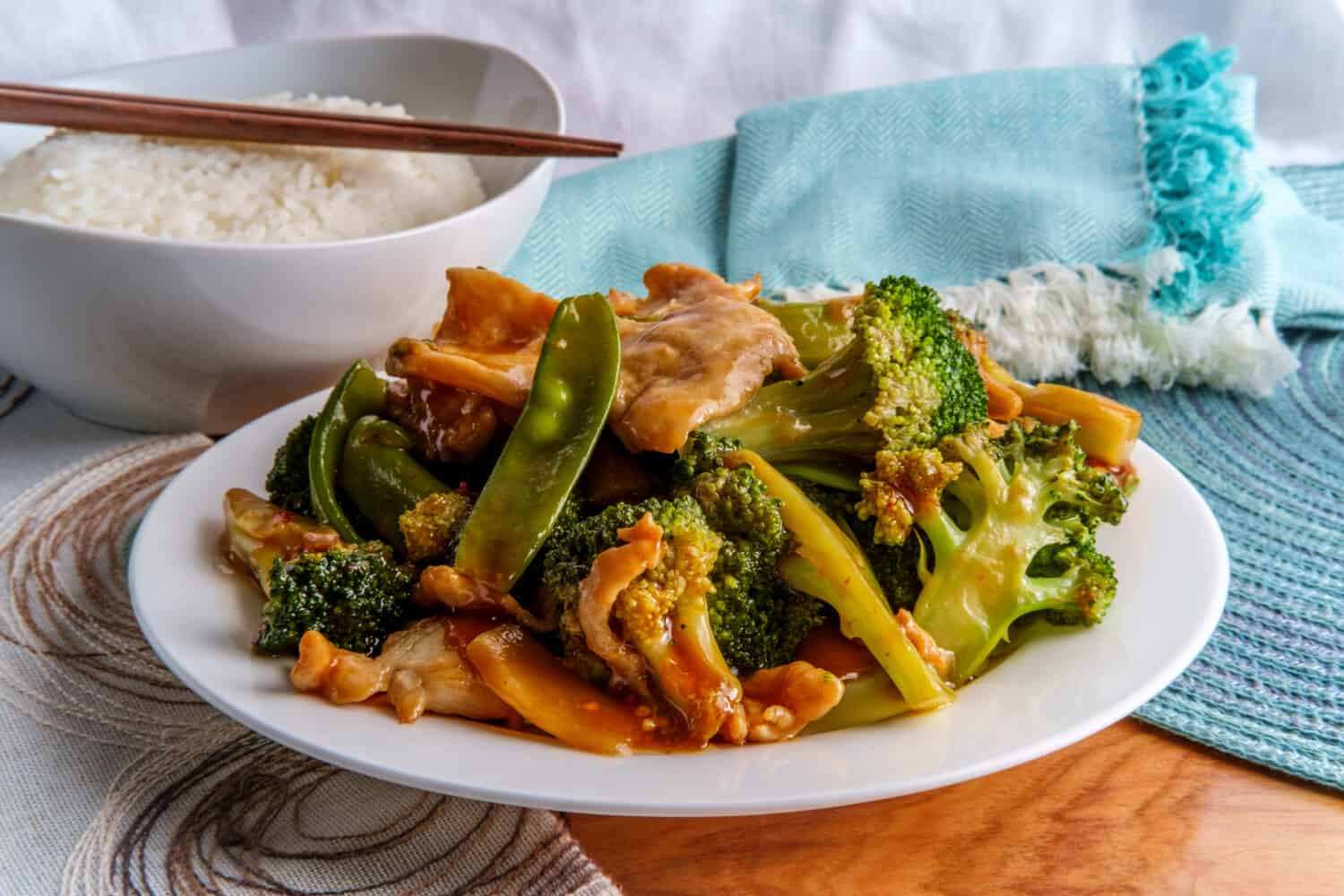Are you a fan of Chinese cuisine or curious about exploring new flavors? Today, we're diving into the world of two popular Chinese dishes: Hunan chicken and Szechuan chicken. While they might sound similar, these dishes originate from different regions of China and have unique characteristics that set them apart.
The main differences between these two dishes are the ingredients used and the spiciness level. Hunan chicken tends to be a little spicier and tangier and includes a combination of various vegetables whereas Szechuan chicken is typically coupled with just peppers and has a powerful yet less spicy flavor.
By understanding what truly sets these dishes apart, you'll be able to decide which one better suits your family. So, let's dive in and uncover the differences between these two delicious Chinese cuisine recipes!
Hunan Chicken vs. Szechuan Chicken: What are the Differences?
As mentioned, the key differences between these two dishes are the ingredients and the level of spiciness in each. Additionally, Hunan chicken and Szechuan chicken originate from different areas of China and offer contrasting nutritional values.
Let's take a closer look at what sets these popular and delightful main course meals apart.
What is Hunan Chicken?

©Kravtzov/Shutterstock.com
Hunan chicken is a popular dish originating from the Hunan province in China. It's known for its bold flavors, vibrant colors, and fiery spiciness. Hunan chicken is a delicious stir-fried meal that combines both hot and sour flavors in its sauce.
Here's an in-depth look at Hunan chicken.
Origin
According to TravelChinaGuide.com, Hunan cuisine, also known as Xiang cuisine, originates from the Hunan Province of Southern China. This type of food is known to be hot, spicy, and salty, with a focus on the use of chili peppers in many of the dishes.
While the history of Hunan cuisine dates back centuries ago, the popularity of this food has spread to other provinces of China and now to other countries including the U.S., Japan, Southwest Asia, and Europe. It's a popular dish that can most likely be found at your local Chinese restaurant.
Flavor and Spiciness
Because Hunan cuisine is known for its emphasis on intense and robust flavors, Hunan chicken is no exception. This dish contains a combination of spicy, savory, and slightly sweet tastes. It also showcases the natural flavors of the ingredients without overly complex seasonings.
Hunan chicken is famous for its fiery heat, making it a favorite among spice enthusiasts. Chili peppers play a significant role in achieving the characteristic spiciness of the dish. Dried red chili peppers or chili paste are commonly used to create the heat this dish is known for. The spiciness level can vary, but in general, Hunan chicken tends to be hotter than Szechuan chicken.
Appearance and Additional Ingredients
Hunan chicken is visually appealing due to the inclusion of various vegetables. When ordering Hunan chicken, it's not uncommon to see vegetables like bell pepper, broccoli, carrots, and green onion. When making this dish at home, it's easily customizable to add your preferred veggies of choice.
Cooking Method
Hunan chicken is typically prepared through stir-frying. The chicken is sliced into bite-sized pieces and marinated. Then it's quickly cooked in a hot wok or pan with a small amount of oil.
After the chicken is cooked, vegetables are added to the dish. A sauce comprised of a combination of soy sauce, rice vinegar, hoisin sauce, and sesame oil is then added to the dish and stir-fried for a few moments to ensure that the chicken and vegetables are evenly covered.
One of the benefits of making Hunan chicken at home is the ability to customize your dish. The level of spiciness can be adjusted to suit individual tastes by adding more or fewer chili peppers. You can also incorporate other ingredients like mushrooms, bell peppers, or bamboo shoots for added texture and flavor.
What is Szechuan Chicken?

©Brent Hofacker/Shutterstock.com
Szechuan chicken originates from the Sichuan province of China. It's known for its bold, spicy, and sometimes unique numbing flavors that are characteristic of Szechuan cuisine. This dish is typically served dry (as in, without sauce) and its spiciness is due to the use of Szechuan peppercorns.
Here's a closer look at this popular Chinese cuisine.
Origin
TravelChinaGuide.com explains that Szechuan cuisine, also known as Sichuan cuisine, originates from Chongqing in Southwest China. It's the most popular cuisine in China with the largest market share and is known to be hot and spicy with its use of peppercorns.
Like Hunan cuisine, Szechuan chicken is a cuisine that has been around for centuries and is likely a popular food item at your local Chinese restaurant.
Flavor and Spiciness
Szechuan chicken is known for its complex flavor profiles. The hot and robust flavors that distinguish Szechuan cuisine are produced by a number of ingredients, including Szechuan peppercorns, chili peppers, and broad bean chili paste.
Szechuan chicken is known for its fiery spiciness, but what sets it apart is the distinctive tingling or numbing sensation provided by Szechuan peppercorns. These tiny reddish-brown peppercorns create a tingling, numbing effect on the tongue, adding a unique dimension to the dish's heat.
Appearance
Szechuan chicken is different from Hunan chicken in that various vegetables are not typically added to the dish. Typically, this main course only includes the chicken and the peppers, giving it a reddish hue as there isn't an additional sauce beyond the peppers. Additionally, the chicken is often deep-fried, giving this dish a drier appearance.
Cooking Method
While Hunan chicken is typically stir-fried, Szechuan chicken is usually deep-fried. The chicken is cut into even pieces, then coated in a batter made from eggs, cornstarch or flour, and seasonings.
While the chicken cooks in oil, a sauce is prepared using a combination of chili bean paste, Szechuan peppercorns, garlic, ginger, and other spices. Once both the chicken and sauce are ready, they are combined and tossed together until the chicken is evenly covered. Green onions and sesame seeds are frequently used as garnish to add flavor and texture.
Like Hunan chicken, if you're making Szechuan chicken at home, you can adjust the amount of heat you want in your dish by increasing or decreasing the amount and type of peppers you include.
Hunan Chicken vs. Szechuan Chicken: Nutritional Value
Both Hunan chicken and Szechuan chicken can provide nutritional value, but it's important to consider the specific ingredients, cooking methods, and portion sizes when assessing their overall nutritional profiles.
Both dishes are high in protein from the chicken. They also have a number of different spices and seasonings like garlic, ginger, and chili peppers, that boast potential health benefits. For example, garlic and ginger may have antimicrobial and anti-inflammatory properties, while chili peppers contain capsaicin, which may aid digestion and boost metabolism.
To keep these meals on the healthier side, be sure to include some of your favorite veggies. Also, try stir-frying Szechuan chicken instead of deep frying it to reduce fat and oils. And be sure to consider your portion size when indulging in these delicious culinary dishes.
Can You Substitute Hunan Chicken with Szechuan Chicken?
In general, yes, you can substitute Hunan chicken for Szechuan chicken or vice versa, depending on your personal preferences and the availability of ingredients. Keep in mind, however, that both of these recipes call for varying heat levels and ingredients. Additionally, Hunan chicken is stir-fried while Szechuan chicken is deep-fried.
While you may be able to substitute one for the other, be sure you adjust ingredients and spice levels accordingly.
Other Chinese Cuisine Recipes
Final Thoughts

- Hunan chicken includes various vegetables, making the dish pop with color. Szechuan chicken can have vegetables included, but usually doesn't.
- Hunan chicken is spicier than Szechuan chicken, an important distinction for those who are sensitive to spice.
- Szechuan chicken is usually deep-fried, while Hunan chicken is usually stir-fried.
In conclusion, while Hunan chicken and Szechuan chicken may look and sound the same, they differ in many ways, including their spiciness level and the ingredients used in each. Hunan chicken has a bold and tangy flavor, boasting a spicier kick and a combination of various vegetables. On the other hand, Szechuan chicken features a potent combination of peppers and a less spicy flavor. Whichever option you choose is sure to be a winner at your next family meal.
Print
Szechuan Chicken
Description
Szechuan chicken is a flavorful dish known for its spicy and bold flavors
Ingredients
For the Marinade:
- 1 pound (450g) boneless, skinless chicken breasts or thighs, cut into bite-sized pieces
- 1 tablespoon soy sauce
- 1 tablespoon Chinese rice wine (or dry sherry)
- 1 tablespoon cornstarch
- 1/2 teaspoon salt
- 1/4 teaspoon black pepper
For the Sauce:
- 2 tablespoons soy sauce
- 1 tablespoon Chinese black vinegar (or balsamic vinegar as a substitute)
- 1 tablespoon hoisin sauce
- 1 tablespoon sugar
- 1 teaspoon sesame oil
For Stir-Frying:
- 2–3 tablespoons vegetable oil
- 3 cloves garlic, minced
- 1-inch piece of ginger, minced
- 2–3 dried red chili peppers (adjust to your preferred level of spiciness), seeds removed and chopped
- 1/2 cup (50g) roasted peanuts (optional)
- Sliced green onions for garnish
Instructions
1. Marinate the Chicken:
- In a bowl, combine the soy sauce, rice wine, cornstarch, salt, and black pepper.
- Add the chicken pieces and toss them to coat evenly. Allow the chicken to marinate for at least 15 minutes while you prepare the other ingredients.
2. Prepare the Sauce:
- In another bowl, mix together the soy sauce, Chinese black vinegar, hoisin sauce, sugar, and sesame oil. Set this sauce aside.
3. Heat the Wok or Pan:
- Heat a wok or large skillet over high heat. Add the vegetable oil and swirl it around to coat the wok evenly.
4. Stir-Fry the Chicken:
- Add the marinated chicken to the hot wok and stir-fry for 2-3 minutes until it's no longer pink. Remove the chicken from the wok and set it aside.
5. Stir-Fry the Aromatics:
- In the same wok, add a bit more oil if needed. Add the minced garlic, ginger, and chopped dried red chili peppers. Stir-fry for about 30 seconds until fragrant.
6. Combine Chicken and Sauce:
- Return the cooked chicken to the wok and pour the sauce over it. Stir-fry for another 2-3 minutes until the chicken is coated with the sauce and heated through.
7. Add Peanuts (Optional):
- If you're using peanuts, add them to the wok and stir-fry for an additional 1-2 minutes until they're heated and coated with the sauce.
8. Garnish and Serve:
- Garnish your Szechuan chicken with sliced green onions and serve it hot with steamed rice.
Remember, Szechuan chicken can be quite spicy, so adjust the amount of dried red chili peppers to suit your heat tolerance.
The image featured at the top of this post is ©Ezume Images/Shutterstock.com.


